2006.02.19 18:46
Iconography, or the problem of representation
The images are gif files depicting CAD 3d surfaces from an arbitrary viewpoint.
You are meant to be seeing CAD 3d surfaces from an arbitrary viewpoint.
Bad Hair Day Architecture is derived via a CAD program that generates a surface between any two provided lines.
Venus Fly Trap Architecture is derived via the ARRIS CAD area rotate surface generator command.
The organizational strategy here is one of unabashed arbitrariness.
2006.03.01 11:45
Iconography, or the problem of representation
Architecture has not reached rock bottom, nor is it likely to do so too anytime soon. What is unfortunate, however, is how architects have for the most part been trained to deny a whole bunch of reality.
"This comparison is not about precedents, rather predictabilities."
2006.03.02 11:46
Iconography, or the problem of representation
What I find most suspect is the implied notion that the FOA terminal is now only fully discussible with reference to the Hosukai wave. The real connection between the two artifacts/designs is superficial at best, and in some ways comes off as trying to "pull the wool over everyone else's eyes."
Is it really true that most architects have a hard time communicating their designs to the public? That's not a rhetorical question. I'm seriously wondering what the answer is. I can see where FOA has a hard time communicating their designs to the public, but do most other architects also have a hard time communicating their designs to the public? Have architects overall become more and more unable to communicate their designs? If this is true, then something tells me that it isn't the public that is really most to blame.
2006.03.04 12:18
Iconography, or the problem of representation
The surface examples I listed are within the context of electronic screens on buildings, and not meant to imply that iconography cannot have depth as well. Nonetheless, an architecture of just camouflage seems to be an interesting typology.
The main reason for the post, however, was to address the notion of architecture as delivery of content, which was (subsequent to quondam) also addressed by Willem-Jan Neutelings in Icon magazine (January 2006).
Architecture as delivery of content seems to be the opposite of architecture of just camouflage, doesn't it?
2006.03.06 12:13
Iconography, or the problem of representation
'Wallpaper' can be applied both inside and outside, can it not?
Is there some kind of law dictating that 'wallpaper' can only be applied to flat surfaces?
| |
2006.03.06 14:39
Iconography, or the problem of representation
Oh gosh, the problems of representation.
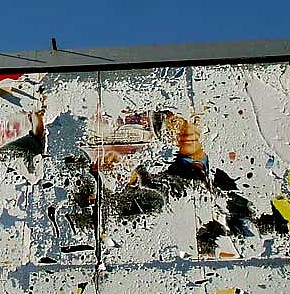
Why does nothing last forever?
2006.03.07 12:06
Iconography, or the problem of representation
To talk about a building's spatiality and experientiality via looking at pictures is a poor and very disappointing way to critique architecture.
Plus, how 'powerful' does an emergency services building (fire station) really have to be?
My local fire station is a nice and modest civic building, although it still saddens me that the tower was taken down a number of years ago--towers for the drying of hoses are now obsolete. The Rite-Aid store across the street is not as attractive but somewhat visually more powerful.
2006.03.16 10:28
Complex Iconography and Contradictory Content in Architecture
As somewhat of a surprise ending, Helena had Catherine de Ricci reenact her stigmata and ring, and then had Louis I. Kahn reenact his burying of the New Testament in snow.
2006.03.16 09:57
on Roman bath houses
Check out ancient Rome's Baths of Helena, now gone but Palladio recorded their remains. Helena was born in Drepanum, today's Yalova, Turkey, where there are still some of the best thermal baths of that region. The relation of major fault lines and thermal baths might make an interesting study.
The Imperial Baths at Augusta Treverorum, today's Trier, Germany, were the largest Roman baths outside of Rome, built under Constantine, Helena's son. Augusta Treverorum was Constantine's Imperial capital before Constantinople.
Historians are still not certain whether Constantine's second wife Fausta committed suicide or was killed in the steam room of a bath in Rome. Did this unfortunate event happen in the Baths of Helena? In any case, Constantine never returned to Rome after Fausta's death, although their daughter Constantina for sure did.
| |
2006.03.18 10:42
Iconography, or the problem of representation
Alejadro wrote:
we forecast the development of a discipline of form with a double agenda, operating simultaneously as an organizational device and as a communicative device
Of all the images within this thread, what is mostly only seen are images/iconography that operate as a 'communicative devise'. There has been very little attention given to images/iconography as 'organizational devise'.
This makes me wonder whether there even is a real 'double agenda' at work here.
The terminal communicates as a wave, but is the terminal really organized like a wave? Does the terminal communicate as a wave because 'waves' of people move through it? It seems you could say that. But is the building itself really organized like a wave? Waves are for the most part ephemeral and non-symmetrical, aren't they?
A stadium looks like a nest (actually it looks more like basket weaving), but is the stadium really organized like a nest? Do large waves of people converge on a nest and then sit (on some eggs) and watch and then fly away? [If the answer is yes, then we very much have an example of reenactionary architecturism, although real nests are not organized to handle more than a few occupants.)
Gnomes with pointy hats may have a iconographic communicative relationship with a group of high pitched roof buildings, but are these buildings really organized like gnomes apart from being randomly scattered like the gnomes in the picture? Have there been studies showing that gnomes organize things in a randomly scattered manner?
How do you organize a building based on a sneaker? Moreover, what type of building would be appropriate to organize like a sneaker, a building to be used by lots of sneaky people?
I wonder what a real 'double agenda' building looks like.
FUNCTION - physical or metaphysical
2006.03.21 10:23
FUNCTION - physical or metaphysical
What are some examples of buildings that are "designed too specifically for its function"?
What happens when the function still exists, but the community moves away?
Do you know how many original synagogues in Philadelphia are not synagogues anymore? Do you know how many original Roman Catholic Churches in Philadelphia are not Roman Catholic Churches anymore?
2006.03.21 10:57
FUNCTION - physical or metaphysical
My point was that now-a-days communities are just as ephemeral as functions.
I knew factories would come up in terms of functionally specific architecture, mostly because the functional aesthetic in architecture was pretty much inspired by factories.
What a "community" keeps is in large measure contingent on how a building is zoned (or rezoned 'residential'). Here in Philadelphia religious buildings tend to stay religious buildings, and religious buildings "function" mostly because they are tax exempt.
Don't get me wrong though, I'm all for re-use before demolition. I mean, how else could I look at a Cambodian Buddhist Temple after I walk out of the Rite-Aid?
| |
2006.03.22 16:23
Architecture as Signal
Real architecture is all about seams that architects most often want covered up.
2006.03.22 16:40
Architecture as Signal
Maybe some architecture courses should be taught by blind people.
2006.05.14 13:08
OMA USA splitting from OMA Europe??

The Architecture of Split Ends
2006.05.15 15:41
The Planless House
there
before
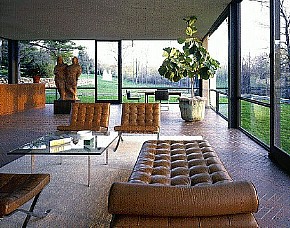
after
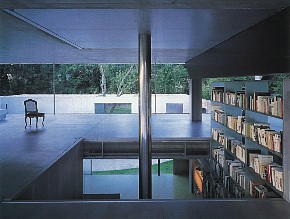
not there
| |
2006.05.15 18:42
The Planless House
In fact, you can never have enough walls or columns.
2006.06.15 13:32
UPenn M.Arch Summer Reading List
Question at job interview:
"So, which reading list do you reenact?
2006.07.26 17:05
scratch the superficiality
Albeit superficial, there is nonetheless a strong similarity between the design of a portion of Acropolis Q and the new design for the Tate Modern 2 by Herzog and de Meuron.
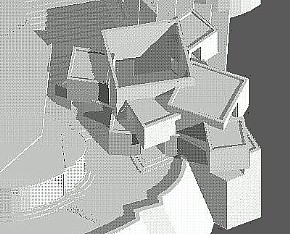 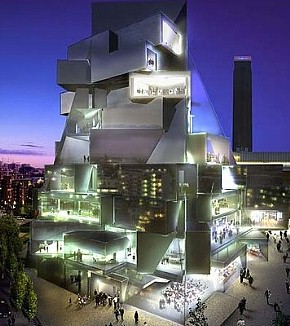
|